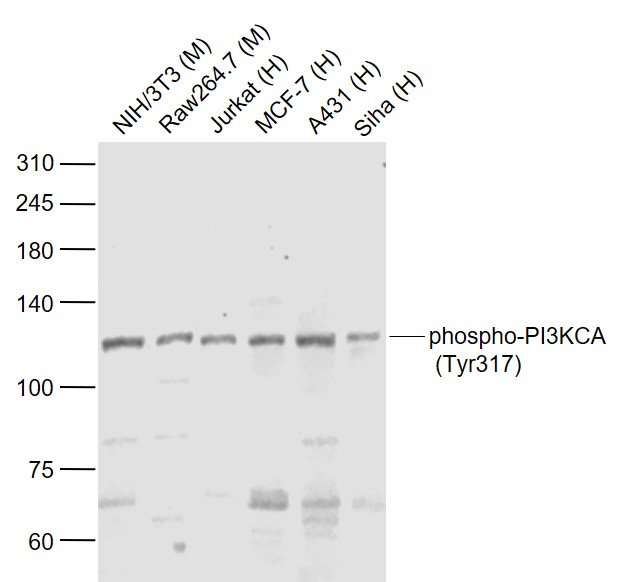Goat anti-PCK2 / PEPCK-M
EB06944
ApplicationsFlow Cytometry, ImmunoFluorescence, Western Blot, ELISA
Product group Antibodies
TargetPCK2
Overview
- SupplierEverest Biotech
- Product NameGoat anti-PCK2 / PEPCK-M Antibody
- Delivery Days Customer5
- Application Supplier NoteImmunofluorescence: Strong expression of the protein seen in the cytoplasm of U2OS cells. Recommended concentration: 10microg/ml. Flow Cytometry: Flow cytometric analysis of MCF7 cells. Recommended concentration: 10ug/ml.
- ApplicationsFlow Cytometry, ImmunoFluorescence, Western Blot, ELISA
- Applications SupplierPep-ELISA, WB, IF, FC
- CertificationResearch Use Only
- ClonalityPolyclonal
- Concentration0.5 mg/ml
- Gene ID5106
- Target namePCK2
- Target descriptionphosphoenolpyruvate carboxykinase 2, mitochondrial
- Target synonymsPEPCK, PEPCK-M, PEPCK2, mtPCK2, phosphoenolpyruvate carboxykinase [GTP], mitochondrial, PEP carboxykinase, epididymis secretory sperm binding protein, phosphopyruvate carboxylase
- HostGoat
- Scientific DescriptionRefSeq number(s): NP_004554.3; NP_001278485.1. Purification: Antigen affinity purified. Names and symbols: PCK2; PEPCK-M; phosphoenolpyruvate carboxykinase 2 (mitochondrial); HGNC:8725; PEPCK; PEPCK2 ; PEP carboxykinase; mitochondrial phosphoenolpyruvate carboxykinase 2; phosphoenolpyruvate carboxylase; phosphopyruvate carboxylase
- Reactivity SupplierHuman, Mouse, Rat, Dog, Pig, Cow
- Storage Instruction-20°C
- UNSPSC12352203
References
- Méndez-Lucas A, Hyroššová P, Novellasdemunt L, et al. Mitochondrial phosphoenolpyruvate carboxykinase (PEPCK-M) is a pro-survival, endoplasmic reticulum (ER) stress response gene involved in tumor cell adaptation to nutrient availability. J Biol Chem. 2014,289(32):22090-102. doi: 10.1074/jbc.M114.566927Read this paper
- Méndez-Lucas A, Duarte JA, Sunny NE, et al. PEPCK-M expression in mouse liver potentiates, not replaces, PEPCK-C mediated gluconeogenesis. J Hepatol. 2013,59(1):105-13. doi: 10.1016/j.jhep.2013.02.020Read this paper






